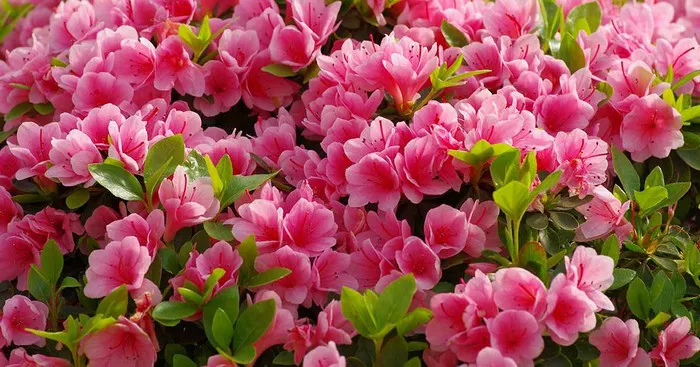Azalea flowers, with their vibrant colors and delicate petals, are a sight to behold in gardens and landscapes around the world. These stunning blooms come in a variety of shapes, sizes, and hues, adding a burst of color and elegance to any outdoor space. In this article, we delve into the captivating world of azalea flowers, exploring their appearance, characteristics, and the diverse range of varieties available to gardening enthusiasts.
What Do Azalea Flowers Look Like?
Azalea flowers exhibit a breathtaking array of colors, ranging from soft pastels to vivid shades, making them a popular choice for gardeners seeking to add beauty and charm to their outdoor spaces. These flowers typically bloom in spring, although some varieties may produce blooms in other seasons as well. Here’s a closer look at the key characteristics of azalea flowers:
1. Petal Structure:
Azalea flowers feature five to seven petals arranged in a distinctive funnel-shaped or tubular form. The petals may be smooth or ruffled, adding texture and visual interest to the blooms.
2. Color Variations:
One of the most striking features of azalea flowers is their diverse range of colors. These flowers can be found in shades of pink, red, purple, white, orange, and yellow, with some varieties boasting bi-color or multi-color blooms. The intensity of the color may vary depending on the specific cultivar and environmental factors.
3. Bloom Size:
Azalea flowers come in various sizes, with some varieties producing small, dainty blooms and others boasting large, showy flowers. The size of the blooms can vary depending on factors such as the age of the plant, growing conditions, and genetic traits.
4. Foliage:
In addition to their stunning flowers, azalea plants are prized for their glossy, dark green foliage, which provides an attractive backdrop for the blooms. The leaves are typically oval or elliptical in shape and may have a smooth or serrated edge.
5. Growth Habit:
Azalea plants can vary in their growth habit, with some varieties growing as compact, rounded shrubs and others developing a more upright or spreading form. The overall size and shape of the plant can depend on factors such as the cultivar, pruning regime, and environmental conditions.
6. Fragrance:
While many azalea varieties are prized for their colorful blooms, not all varieties are known for their fragrance. Some azaleas may have a mild, sweet scent, while others are scentless. Gardeners interested in fragrant varieties should research specific cultivars known for their aromatic blooms.
7. Bloom Period:
Most azalea varieties bloom in spring, typically from late March to early June, depending on the climate and geographic location. However, there are exceptions, with some varieties flowering in late summer or fall. The duration of the bloom period can vary depending on factors such as weather conditions and the health of the plant.
8. Floral Arrangements:
Azalea flowers are often used in floral arrangements and bouquets due to their vibrant colors and attractive appearance. These blooms can add a pop of color and elegance to wedding arrangements, table centerpieces, and other floral creations.
9. Pollination and Reproduction:
Azalea flowers are pollinated by bees, butterflies, and other insects attracted to their nectar-rich blooms. After pollination, the flowers develop into seed pods containing numerous small seeds. Azalea plants can also be propagated through techniques such as stem cuttings and layering.
10. Hybrid Varieties:
Over the years, plant breeders have developed countless hybrid azalea varieties, resulting in an extensive selection of cultivars with unique characteristics. These hybrids may exhibit traits such as improved disease resistance, compact growth habits, and novel flower colors and forms.
11. Seasonal Changes:
The appearance of azalea flowers can change throughout the growing season, with blooms transitioning from tight buds to fully open flowers. As the flowers age, their colors may fade or intensify, adding to the visual interest of the plant.
12. Environmental Considerations:
Azalea plants thrive in acidic, well-drained soil with adequate moisture and partial shade. Proper care and maintenance, including regular watering, fertilizing, and pruning, are essential for promoting healthy growth and abundant blooms. Additionally, selecting the right variety for your climate and growing conditions can help ensure success in cultivating azaleas.
Conclusion
Azalea flowers captivate the senses with their exquisite beauty and diverse array of colors, shapes, and sizes. Whether used as focal points in garden beds, accent plants in landscapes, or cut flowers in floral arrangements, azaleas never fail to make a lasting impression. By understanding the unique characteristics of azalea flowers and selecting the right varieties for your garden, you can enjoy their stunning blooms season after season, adding a touch of elegance and charm to your outdoor spaces.


